








• • Agency, police launch operation in launch in Maun
• • Operation targets drug related activities related activities
• • Dagga, CAT, Cocaine most prevalent Dagga, CAT, Cocaine most prevalent
• • Agency also embarks on community also embarks on outreach
• • Targets students, teachers, parents and parents and street vendors

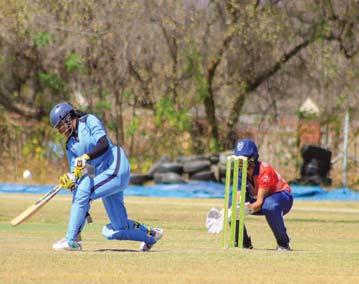






















Chinese miner, MMG Limited which has acquired Khoemacau Copper Mining in a deal valued at nearly $1.88 billion has revealed its intentions to gradually introduce a small number of new leadership roles at the mine.
This was revealed by the company’s Head of Corporate Affairs, Andrea Atell who explained that the changes are meant to build engagement between the MMG management team including representation from its major shareholder, China Minmetals Corporation.
However, Atell could not clearly state whether the company will accede to Botswana Mine Workers Union (BMWU)’s advises to appoint a new CEO. The union accuses Johan Ferreira of perpetuating the poor working conditions at the mine, among them issues of safety and health standards and instances of harassment.
During its meeting with MMG in March, the union had advised the company that, for harmonious industrial relations to prevail at Khoemacau operations, the Hong Kong based mining company should consider the appointment of a new CEO to run the mine.
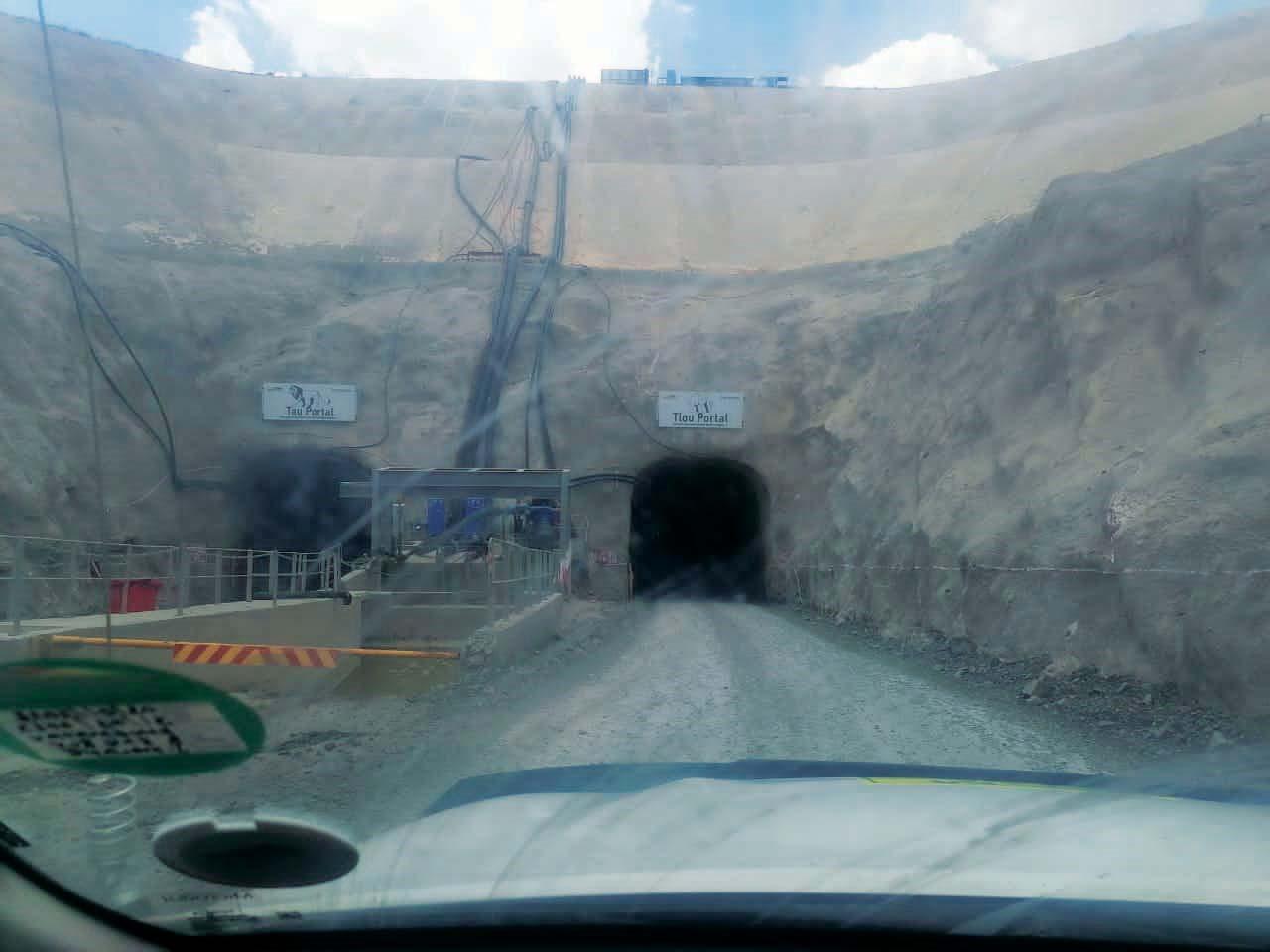
Responding to this publication’s questionnaire with regards to that consideration, Atell only said, “MMG’s operating model is to support the asset level management and we will support the local management team to continue strong operations and the growth of the operation.”
As for the concerns raised by the union of workers’ conditions of work; safety and health standards among other things, the company’s Head of Corporate Affairs assured that the Khoemacau management team will continue to consult with local employees and the union to understand and address the concerns. Atell emphasised that MMG’s first value and highest operating priority is the safety of its people and
communities. As the mine’s ownership changes brought some fear amongst employees from across all ranks especially on job security, Atell has assured that MMG’s focus is on expanding operations and generating employment opportunities.
“MMG appreciates the contributions made by the Khoemacau workforce to ensure its success in tak-
ing the site from a project through to operation. Our focus is now on building on this success to further develop the asset and create further employment opportunities,” Atell stressed. With regard to their plans and future goals about mine, Atell noted that Khoemacau is a high-quality operation with a strong expansion case therefore their priority is ensuring a strong future
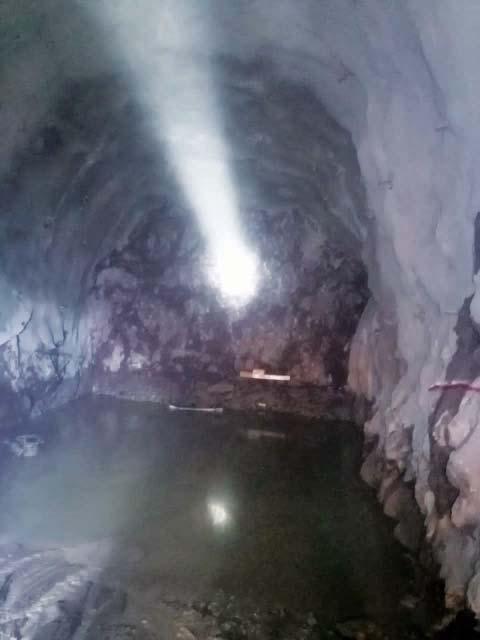
for the asset, employees and the community. He indicated that their focus will be on optimising operations and conducting the necessary works to ensure they can progress the site’s expansion.
Meanwhile, the company’s senior management this week paid a courtesy call to President Mokgweetsi Masisi where the chairperson, Xu Jiqing rexpressed dedi-
cation to doubling Khoemacau’s production and transforming it into one of the most significant high-grade copper operations in Africa. He emphasized leveraging existing infrastructure and proven mining methods to increase production capacity. To achieve this, he said the mine would conduct a feasibility study to identify exploration opportunities.
Tawana Land Board (TLB) has come out to deny the widespread reports and concerns over the delay in releasing letters of resolutions to applicants for land rights transfers, pending allocation of certificates.
This is despites some frustrated members of the public who have come forward with complaints that it has been months knocking on the Maun Sub Land Board’s doors requesting for the resolutions, but are yet to be furnished with those.
Reached for comment the board’s chairperson, Reamogetse Yekenge claimed ignorance about any delays but referred this publication to the public relations office for further enquiries. The PRO, Frank Ndiye also expressed
shock at the reports about delayed board’ resolutions.
To his knowledge the board has been doing a good in that department and that there are no pending resolutions submissions. He further indicated that as of last month the office responsible for that finalised over 700 resolutions and submitted to the clients. However, a reliable source within the board refuted the statements made by his colleagues, acknowledging that indeed there has been some delays. “Those people are lying, we have been receiving calls from people complaining about the same issue,” the source revealed.
One of the complainants, Kgotso Kehemetswe noted that he has long applied for transfer of land rights for a residential plot in Sexaxa but since January this year he has
been waiting for the board’s resolution. This he said is despite having been told that the board sat and made conclusions on the transfers and that all was left was for the resolutions to be signed then delivered to them.
“After going to their offices several times we were told that the resolutions will be ready after the Easter Holidays but to our disappointment we are still waiting,” he said in an interview.
Another disgruntled resident, Mothokomedi Segadimo shared the same sentiments noting that they were told that the resolutions have been made but they are only awaiting to be signed and delivered after the holidays.
Both complainants suspect the officers’ incompetency more so they know that the resolutions usually do not
take time to be finalised. They lamented that the delay has affected them badly highlighting that there is no how they can apply for water and electricity connections without the letters of resolution.
Segadimo lamented, “this has really affected me because I needed to start doing some developments on my business plot but I ca not do that not knowing what the board’s resolution is regarding the transfer of land rights.” Kehemetswe also decried, “President Mokgweetsi Masisi has released programmes that we wanted to apply for and take advantage of but this delay from Tawana Land Board is frustrating because it blocks everything. Since I am based in Gantsi it is also costly for me to travel to Maun several times without getting any help.”
Prompted by the widespread use of illicit drugs in Maun especially among the youths, the Drug Enforcement Agency (DEA) this week descended on Maun to further its mandate to combat the alarming rate of drug use across the country. The agency’s education and outreach wing, along with key stakeholders held a week-long undertaking in Maun sensitising the public to join hands and fight the use of illicit drugs. The activities were a build up to the national Anti-Drugs Campaign to be launched in Maun this Friday under the theme, ‘drugs my enemy, your enemy, united we can win.’
DEA Public Education Di-
rector, Motshereganyi Sefanyetso indicated that though they covered other areas that include Nata, Gaborone, Selibe-Phikwe and Serowe, Maun remains an area of concern because according to the police statistics, there is high number of cases relating to illicit drug abuse in the area.
He revealed that though the outreach is targeting the youth demography, they have however intensified the campaign in schools as this is where the situation is also reported to be worrisome.
The engagements also targeted the community at large including Parents Teachers Associations, churches, parents, hawkers and street vendors. There has been a concern in the involvement of hawkers and street vendors, car washes in selling
Botswana’s permanent secretary in the ministry of communications, knowledge and Technology Pontsho Pusoetsile has said bringing Japan and Africa together for joint research is a monumental stride in resolving global issues.
This as the ecosystem demands more and skilled partners, more funding, more support, and cutting-edge infrastructure, indicating that togetherness can help them address local and global challenges head-on. Pusoetsile was speaking at the just ended Africa-Japan Collaboration Research and Innovation workshop (AJCORE) which brought together researchers, policy makers and visionaries from different countries to explore the intersection of knowledge, innovation, and partnership.
AJ-CORE is a partnership between the National Research Foundation (NRF) of South Africa and the Japan Science and Technology Agency (JST) which aims to support joint research and innovation projects in designated fields of science between researchers from Japan, South Africa and the 17 African countries whose ministries and granting councils are a participating member in the Science Granting Councils Initiative (SGCI).
According to Pusoetsile, the Africa-Japan Collaborative Research Programme transcends borders and leverages research and innovation to tackle shared obstacles, emphasising that their commit-
drugs to the community and students as well.
According to police statistics, the drugs that are popularly used in Maun are dagga, Methcathinone which is popularly known as CAT as well as cocaine with dagga leading the numbers followed by CAT and then cocaine. From 2020 to 2023 police recorded rising cases of the use of these drugs altogether with a total of 33 recorded in 2020, 50 in both 2021 and 2022 then 60 in 2023.
Dagga cases weighing
4.273kg were registered in 2020, 14.553kg in 2021, 2022 (80.816kg) and 9.471kg in 2023. With regards to CAT, in 2020 the drugs weighed at 23.138g, 251.717g in 2021, 818.271g in 2022 while in 2023 the weigh stood at 166g. Between 2020 and 2023 police arrested a total of 233 males and 37 females all being Botswana citizens while there were only 6 male non-citizens arrested in 2022. The age analysis indicates that between 2020 and 2023 a total of 24 (both
males and females) were of age ranging between 10-19, those aged between 20-29 were 125, 30 – 39 years (88), 40 – 49 years (39) and 50 –59 years (4).
The socio-economic profile comparison shows that between 2020 and 2023 there were only 2 cases involving students, 121 were Out of School Youth, 35 (employed) 121 (unemployed).
Established in accordance with Section (V) of the Illicit Traffic in Narcotics and Psychotropic Substances Act of 2018, DEA is mandated to
collect, collate and disseminate information on illegal use of narcotic drugs and psychotropic substances. Additionally, the agency is tasked to receive, investigate any complaint of alleged or suspected breach of the Act. It also addresses and advise government ministries and departments, public bodies, institutions, companies, statutory bodies and corporations on ways and means of preventing prohibited activities relating to narcotic drugs and psychotropic substances.
ment lies in promoting inclusive socio-economic growth and enhancing the quality of life for the people.
“The Sustainable Development Goals (SDGs) paint an optimistic vision of a transformed world by 2030. Meanwhile, the African Agenda 2063 envisions the Africa we want, where every citizen enjoys a quality life. In Botswana, our goal is ‘prosperity for all’ by 2036, an achievement that encompasses individual, community, and national fulfillment,” he said.
For her part, National Research Foundation (NRF) Executive Director Dr Prudence Makhura said AJ-CORE aims to support joint research and innovation projects in designated fields of science between researchers from Japan, South Africa and the 17 African countries whose ministries and granting councils are a participating member in the Science Granting Councils Initiative (SGCI).
Outlining the broader context and the link between SGCI and AJ-CORE research projects, Dr Makhura emphasised that the AJ-CORE Programme was made possible by the success of the Science Granting Council Initiative (SGCI) which was launched in 2015 to strengthen the capacities of Councils to support research and evidence-based policies that can contribute to economic and social development, indicating that the 17 SGCI participating countries in East Africa, West Africa and Southern Africa have partnered with the SGCI to implement the initiative.
LOCATION: CAMP | REPORTING TO: EXECUTIVE CHEF
The Senior Head Chef is responsible for ensuring camp clusters consistently meet the food preparation standards. Responsible for making sure that other set standards and company policies and procedures are consistently adhered to in camps. This includes health and safety, stock control, cost control and wastage and staff performance, training, and management.
•Ensure that all kitchens within the designated camps adhere to set company standards, processes, policies, and procedures related to kitchen operations.
•Develop and oversee the implementation of control systems and processes within camp kitchens which effectively and efficiently maintain the highest quality levels whilst managing costs and minimising waste and pilferage.
•Ensure that all kitchens within the concession comply with relevant laws and regulations, including waste disposal.
•Implementing environmental best practice in kitchens.
•Provide input into the annual budgeting process and identify and communicate necessary capital expenditure.
•Carry out regular checks on food and kitchen processes to assess quality and consistency.
•Solicit feedback from stakeholders to obtain insights regarding all food and service-related matters to develop and continuously improve food quality and meet guest expectations.
•Identify staff training and development needs for the kitchen staff within the camp clusters in consultation with the camp Head Chef’s and Chef’s (as applicable), with input from FoH Manager.
•Undertake periodic performance reviews in line with company policies and procedures, with input from FoH Manager.
•Minimum of Diploma in Culinary Arts or equivalent, at least five (5) years’ experience in kitchen management or in a similar role, preferably within the safari industry.
•Aware of the developments within the food and safari industries as well as international trends in hospitality and food.
•Senior experience in kitchen management.
•Current Food Handlers Health Certificate.
•Good command of the English language.
•Experience in managing a large team.
•Good working knowledge of the Microsoft Productivity Tools (Outlook, Word, Excel and Planner).
•Good financial acumen.
•Excellent organisation and planning skills.
•Leadership and development skills.
•Excellent interpersonal and communication skills.
•Adaptable and flexible working approach.
•Honesty and sober habits.
Applicants are requested to submit their CVs along with verifiable references to: Email to: awetse.vasco@desertdelta.com
Please note that only short-listed candidates will receive a response.
Application deadline: 03 May 2024

Maun Police, in collaboration with the Drug Enforcement Agency (DEA), this week made significant strides in the ongoing crackdown on illicit drugs, apprehending three individuals.
Maun Police station commander Dennis Zilawe has disclosed that the operation targeted drug-related activities in the policing area.
He revealed that during a raid on a residence in Mabudutsa, police found two men, aged 30 and 37 in possession of a suspicious white powder believed to be catamine. The suspects were arrested pending further investigation.
Zilawe emphasised that the substances seized were sent to the forensic laboratory for analysis to confirm their nature. If confirmed as catamine, the offenders could face severe penalties, including imprisonment.
Simultaneously, law enforcement officers intercepted another individual in Boseja during a stop-and-search operation. Upon inspection, the police discovered a substance suspected to be marijuana concealed in the suspect’s pockets. The 20-year-old man was promptly apprehended, and the confiscated substance was sent for testing.
Zilawe underscored the prevalence of drug-related incidents in the Maun area, revealing that nine cases had been reported since the beginning of the year. He noted that the demographic involved in such offenses typically ranged from 18 to 40 years old.
According to the Illicit Traf-

fic in Narcotic Drugs and Psychotropic Substances Act of Botswana, individuals found cultivating or possessing narcotics face fines up to P500,000 or imprisonment of up to 20 years, or both.
Zilawe further emphasised the unequivocal stance of the law on drug-related crimes and affirmed the police’s commitment to upholding the rule of law through rigorous enforcement measures.
Meanwhile police in Sehitwa are investigating an incident involving a 23-year-old man from Kgalagadi Ward who was found unconscious by the roadside, suffering from severe head wounds.
According to Sehitwa Police Station Commander Nshaki Mabophiwa, the report was brought to their attention by a 42-year-old male resident of Sehithwa who discovered the victim and promptly alerted
authorities.
Upon arrival at the scene, police allegedly observed the injured man displaying signs of heavy bleeding and quickly rushed him to Sehitwa clinic before transferring him to Letsholathebe II Memorial Hospital for further treatment.
After regaining consciousness, the victim assisted police in their investigations, shedding light on the circumstances surrounding his injuries. He had allegedly been in the company of two women following a night out. An argument ensued between him and one of the women, during which she accused him of stealing her wallet containing approximately P700. The alleged altercation escalated, resulting in the woman purportedly striking the man with a bottle, rendering him unconscious before fleeing the scene.
Mabophiwa disclosed that the suspected assailant, a 23-year-old resident of Kgalagadi ward, was apprehended and remains in custody. She maintained her accusation that the victim had allegedly stolen her wallet, which prompted the police to do a search of both the man’s and woman’s residences. However, no evidence was found at either location.
After persistent questioning, the woman eventually disclosed the whereabouts of the wallet, hidden within a rusted frame of a land cruiser car. Upon retrieval, it was discovered that the actual amount of money in the wallet was less than initially reported.
The suspect remains in custody while the victim continues to recover at Letsholathebe II Memorial Hospital from his injuries.
Trial dates for a case in which a 51-year-old man of Senonnori ward in Maun is charged for rape and unlawful wounding involving his biological daughter and his wife respectively have been set for October 7th to 8th this year.
The accused person is alleged to have raped his biological daughter on the dates between the 24th July and 16th September 2023 at their home in Senonnori. It is alleged that on the 13th September the victim was found by her mother crying and when asked why she was crying, she told her mother that her father has been
having sexual intercourse with her without her consent. The victim further revealed that the accused person beat her up for refusing to have sex with him. The accused person was arrested and later granted bail on the rape case while the victim was placed in a safe place.
While out on bail, the accused person is said to have allegedly then committed another offence of unlawfully wounding his wife who is also a state witness in the rape case by stabbing her on the neck on 7th October 2023.
The wife was admitted at Nyangabwe Referral Hospital intensive care unit. Both
are currently home, with the mother aid to have recovered well while the daughter has been receiving psychological support.
Appearing before Maun Principal Magistrate Gofaone Mosweu this week, state prosecution confirmed that the set dates of October 7th and 8th were suitable for trial, however Case Management Conferencing (CMC) was postponed to a next mention since the substantive prosecutor was not available.
For his part, the accused person who has been in custody after his bail was revoked expressed his frustration at the prosecution’s delaying CMC.
He also confirmed that the dates were suitable.
Mosweu who set the 22nd April for CMC noted that the postponement did not affect the case since trial is in October.
The accused was initially denied bail by Maun Chief Magistrate Thebeetsile Mulalu who was of the view that the accused person was not a suitable candidate for bail due to the fact that he is charged with grievous offences against his own family members adding that the investigating officer cannot be at faulted for having a fear that the accused person is a danger to his own family.

 By Bhekinkosi Phiri
By Bhekinkosi Phiri
The Queen Esther International Beauty Pageant 2024 which was hosted in Maun over the weekend has crowned Lauren Traoré from Burkina Faso as the winner.
At the heart of Traore’s triumph lay her inspiring social impact project—a bakery established to support underprivileged girls in her community, offering them a path to economic independence and social upliftment. Traore’s victory did not come with the coveted crown but also a substantial cash prize of $1000, a Scholarship for an image consultant course as well as a wardrobe of clothes worth $5000. Joining her on the winner’s podium were 1st Princess, Hoa Hang from Vietnam, and the 2nd Princess, Dasebu Kafui from Ghana, who secured prizes of $500 and $300 respectively, along with their own
scholarships for image consultancy courses.
Vehai Tjiriange, the executive coordinator of the pageant, expressed enthusiasm for Traore’s journey ahead, stating, “We envision Lauren as a beacon of change and leadership within her community, empowered to make a meaningful impact wherever she chooses to serve.”
Under the theme “Mobilising and empowering girls and young women to take action,” this year’s pageant showcased the talents and aspirations of contestants from twenty nations among them Ghana, Zambia, Namibia, Cape Verde and Botswana. Despite the fierce competition, every participant was assured of mentorship and guidance, regardless of their placement.
With an estimated 65 attendees present in person and an additional 33 joining virtually, the event was a testament to the growing signif-
icance of platforms like the Queen Esther International Beauty Pageant in fostering women leadership and empowerment.
Rooted in Christian values and inspired by the biblical tale of Queen Esther, the pageant aims not only to celebrate external beauty but also to nurture inner strength, intelligence, and integrity. Through leadership training and life skills development, participants are equipped to become agents of positive change in their communities.
The week-long festivities were enriched by a comprehensive program that engaged all delegates in an empowering Lead Girl Networking Conference. This three-day initiative featured a series of accredited leadership training sessions conducted by facilitators hailing from five different countries. Designed with precision, the training aimed to empower delegates, molding them into influential young women ready to catalyze positive change within their respective communities.
As the curtains drew to a close on this year’s event, the legacy of Queen Esther International Beauty Pageant shines brighter than ever—a beacon of hope, inspiration, and empowerment for young women across the globe.

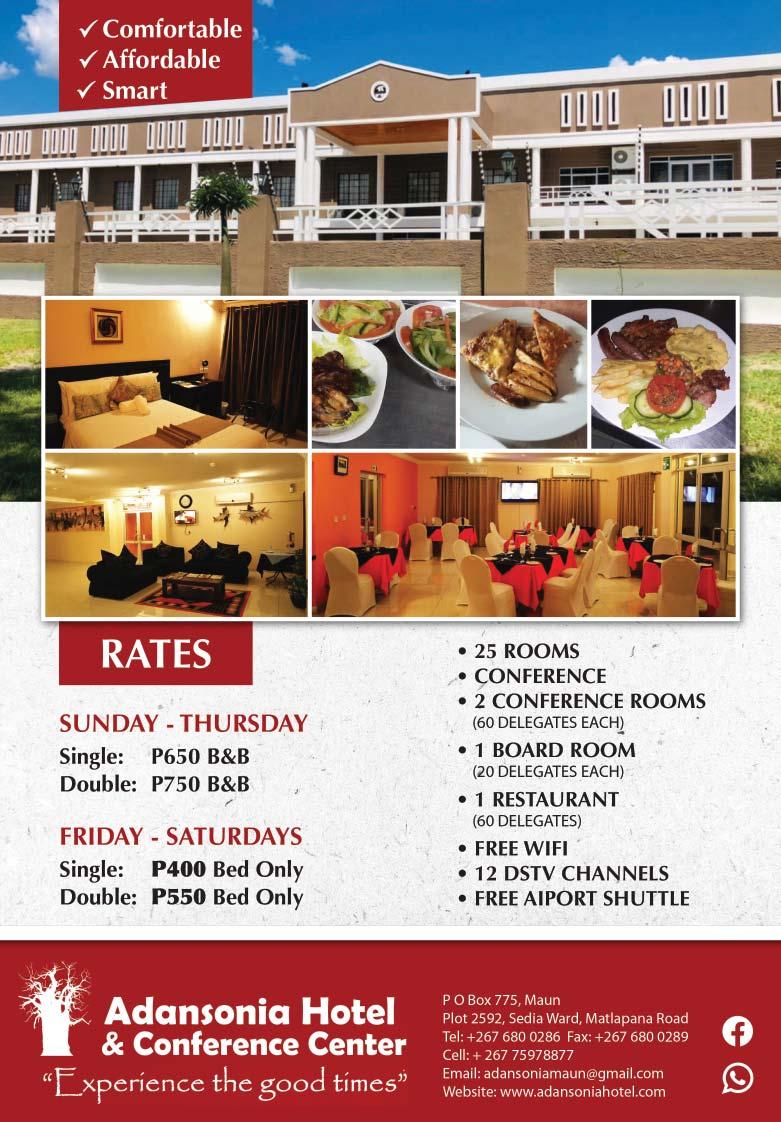
Notice issued in terms of Section 10 of the Environmental Assessment Act (CAP 65:07)
The major findings of an Environmental Impact Assessment (EIA) undertaken for the proposed Agrotourism Project in Khwai are summarised hereunder;
a) Nature and magnitude of the activity
The project`s backbone will be production of indigenous fruit trees. These will include Baobab (Adonsonia digitata) Jackal berry (Diospyros mespiliformis) and Mangetti (Schinziophyton rautane-ii). The proposed developments are in two parts, firstly, planting of 100 indigenous fruit tree seed-lings and then construction of tented accommodation. Once the fruit trees start to produce fruits, they will be harvested, packaged and taken to Maun and sold to Small and Medium scale entrepre-neurs. Tourists will also participate in the harvesting and tasting of the indigenous fruits. The pro-posed developments of a safari lodge will include twelve en-suite chalets and three family villas, massage parlour, swimming pool restaurant, reception area and staff village. At full capacity, the safari lodge will host 36 tourists. Ancillary structures will include a kitchen, storerooms for dry foods, materials, equipment, the wastewater treatment plant and Helipad. The area reserved for farming activities will comprise 50% of the farm area whilst the area reserved for tourism will comprise the remaining 50% of the farm area.
b) Location of Facility
The facility will be on Plot 261, a farm owned by Mrs Ivy Agisanyang Sango, located in NG/19 on the southern side of Khwai village, adjacent to Moremi Game Reserve. The GPS location of the central point of the project site is 19° 09’20.17”S, 23°46’42.05”E. The size of the Farm is 25Ha
c) Anticipated Environmental Impacts and Mitigation measures to respond to the negative Impacts
The environmental impacts and mitigation measures identified by the EIA study are presented in the EIA report and summarised in the Table below.
Project Phase Environmental impactMitigation Measure
Construction Phase Noise pollution
Air pollution
Soil contamination by hydrocar-bons
Visual pollution
Dispersal of litter outside project area and posing risks to people
Risk of injuries
Spread of disease
Employment creation
Operation Phase Noise pollution
Introduction of alien plant species
High energy wastage
Dispersal of litter outside project area and posing risks to people and wildlife
Risk of injuries
Spread of disease
Employment creation
Diversified business opportunities
Decommissioning Phase Loss of employment
Reduced business opportunities
d) Environmental Impact Statement Placement
Reduce excessive revving of vehicles whilst on site
Drive slowly at 30km/hr Sprinkle water on area to be dug to reduce dust generation
Construction vehicles and machinery not to be serviced or refuelled on construction site
Collect litter, soil residues and waste timely
Separate litter, dispose it off to designated landfill in Maun
Ensure workers wear PPE. Train employees on safety procedures and conduct awareness campaign on health risks
Intensify community mobilization efforts about HIV/ADIS and oth-er communicable diseases
Advertise employment opportunities to the community of Khwai
Outsource some services from local community
Reduce excessive revving of vehicles whilst loading and off loading
Remove alien species on site
Use energy saving technology and devices
Provide litter bins with lids
Separate litter and dispose it off appropriately
Ensure workers wear PPE. Train employees on safety procedures
Conduct awareness campaign on health risks
Intensify community mobilization efforts about HIV/ADIS and oth-er communicable diseases
Advertise employment opportunities to Khwai and neighbouring communities. Outsource some services from local community
Interaction with other sectors of the local economy and businesses
Give employees 3 months’ notice to impending closure. Give em-ployees terminal benefits
Give partner businesses 3 months’ notice to impending closure
Copies of the EIS can be accessed at the following areas for review by the public:
Department of Environmental Affairs Plot 523, Light Industrial, Mophane Road, next to Motorvac Maun and at Khwai Kgotla, Khwai village.
e) Correspondences
Written comments or objections from those likely to be affected by the project and other interested persons should be submitted to the Department of Environmental Affairs, by 26th April 2024.
All correspondence should be addressed to:
District Environmental Officer
Department of Environmental Affairs
P. O. Box 35 MAUN
Tel: 6801237 Email: deamaun@gov.bw or hand delivered to DEA Office, Plot 523, Light Industrial, Mophane Road, next to Motovac. MAUN

KITSISO MO SECHABENG
Kitsiso e ntshiwa mabapi le Karolo ya Lesome ya Molao wa Tshekatsheko seemo sa Tikologo (CAP 65:07)
KITSISO MO SECHABENG MABAPI LE KANOKO YA TSHEKATSHEKO YA KAME-GO
YA TIKOLOGO KA TLHABOLOLO LEFELO LE LE TLHAKANTSENG TEMO THUO LE BOJANANALA (AGROTOURISM) KWA KHWAI
Dipatlisiso tsotlhe tse di bonweng fa go dirwa ditshekatsheko tsa seemo sa kamego ya tikologo ka nako ya kago le ka nako ya fa lefelo le setse le bereka di sobokilwe fa tlase.
a) Boleng le bogolo jwa tlhabololo Boremelelo jwa tiriso ya tshimo e tlaabo ele go ntsha maungo a naga a akaretsa Mowana, Mo-khutsomo le Mongongo. Santlha go tlaa lengwa ditlhare tsa maungo dile lekgolo. Go tswaa foo go tlaa agwa matlo a boroko a bajanala. Fa ditlhare di sena go ugwa, maungo a tlaa pakiwa a ba a isiwa kwa marekisetsong a Maun. Bajanala le bone ba tlaa ja maungo go utlwa gore a ntse jang. Go tlaa agwa ditente dile lesome le bobedi tsa bajanala le tse tharo tse di tsenyang balolapa. Kampa e tlaa nna le bajanala ba le 36 ga e tletse. Go tlaa agwa fa bajanala ba jeleng teng, letamo la go thuma, ntlo ya boapeelo, ntlo ya mabeelo, fa go tlhatswang metsi a matlwana a boitiketso, matlo a babereki le matlo a boitiketso le fa go tlhapelwang teng. Go tla nna le fa sefofane sa tlhootomo se kotamang teng.
b) Lefelo la tiro
Lefelo ke Plot 261, mo tshimong ya ga Mme Ivy Agisanyang Sango, mme e fitlhelwa mo NG/19 gaufe le motse wa Khwai go bapa le Moremi Game Reserve. Botona jwa tshimo ke 25 Ha. Di-nomoro (coordinates) tsa bogare jwa tshimo ke; 19° 09’20.17”S, 23°46’42.05”E.
c) Ditlamorago tse di ka tlhagogang le tse di akantsweng go fokotsa manokonoko a go amega ga tikologo
Ditlamorago tse di ka tlhagogang le tse di akantsweng go fokotsa manokonoko a go amega ga tikologo di kwadilwe mo pegong (EIA) ka botlalo, mme fa tlase fa ke tshoboko fela.
Legato la tiro Tse di amang tikologoTse di akantsweng go fokotsa manokonoko a go amega ga tikologo
Kago Modumo o o feteletsengFokotsa modumo wa dikoloi ka go sa gata mafura thata fa di le kwa lefelong la kago.
Kgotelesego ya phefo Kgwaetsa ka lebelo le le kwa tlase (30km/ hr). Metsi a gasiwe fa lefelong la ka-go go fokotsa lerole.
Kgotelesego ya mmu ke di ole Dikoloi le dimachine ga di a tshwanna go baakanyetswa kwa lefelong la kago. Dikoloi ga dia tshwanna go tshelwa leokwane kwa lefelong la kago.
Ditebego tse di sa kgatlhiseng Matlakala a tshwanetse go latlhwa ka bofefo a ise a phatlaladiwe ke diphefo kgotsa diphologolo.
Go leswafatsa tikologoMatlakala a tshwanetse go tlhaolwa mme a isiwe kwa lifelong la matlakala la Maun
Dikgobalo Babereki ba tshwanetse apara diaparo tse di babalesegileng le go rutwa mekgwa ya ipabalelo mo tirong go fokotsa dikotsi.
Go anama ga malwetse Go godisa maiteko a go rotloetsa go tsaya karolo ga morafe mo go hemeng malwetse a a tshelenwang (HIV/AIDS le amangwe).
Go tlhamiwa ga mebereko Diphatlha tsa mebereko di tshwanetse tsa phatlaladiwa ko metseng e e gaufi le Kampa. Batho ba metse e e gaufi le Kampa ba tshwanetse go rotloediwa go gweba le Kampa
Kanako ya tsamaiso ya kgwebo Modumo o o feteletseng Fokotsa modumo wa dikoloi ka go sa gata mafura thata fa di pega kana di folosa dithoto
Go tlisa dimela tse di botlhabetsi mo tikologong
Go ntsha dimela tse di botlhabetsi mo tikologong
Go anama ga malwetse Go godisa maiteko a go rotloetsa go tsaya karolo ga morafe mo go hemeng malwetse a a tshelenwang (HIV/AIDS le amagwe).
Go gasagasa matlakala Matlakala a tshwanetse go tsenngwa mo di kantini tse dinang le dikhurumelo tse di ka sekeng tsa bulwa ke diphologolo Matlakala a tshwanetse go tlhaolwa mme a isiwe kwa lefelong la matlakala la Maun.
Dikgobalo Babereki ba tshwanetse go apara diaparo tse di babalesegileng le go rutwa mekgwa ya ipabalelo mo tirong go fokotsa dikotsi
Go tlhamiwa ga mebereko Diphatlha tsa mebereko di tshwanetse tsa phatlaladiwa ko metseng e e gaufi le Kampa. Batho ba metse e e gaufi le Kampa ba tshwanetse go rotloediwa go gweba le Kampa
Morago ga kgwebo e ema go dira
Go latlhegelwa ke ditiro Babereki ba tshwanetse go fiwa tlhagiso ya dikgwedi dile tharo fa Kamapa e ema go dira.
Phokotsego ya diphatla tsa kgwebo Bagwebi ba ba dirisanyang le Kampa ba tshwanetse go fiwa tlhagiso ya dikgwedi di le tharo pele ga Kampa e tswalwa
d) Mabeelo a meriti ya mekwalo ya tshekatsheko
Meriti ya mokwalo wa tshekatsheko tikologo o o feletseng e ka bonwa kwa Ofisi ya Lephata la Tikologo mo Maun, ko Plot 523, Light Industrial, mo tseleng ya, Mophane, go bapa le madirelo a Motorvac, lekwa Kgotleng ya motse wa Khwai.
e) Dikakgelo le Mekwalo
Dikakgalo le dingongorego go tswa mo go ba ba amageng kgotsa ba ba nang le kgatlhego ka tiro e, di ka romelwa ka mokwalo ko Lephateng la Tikologo pe le ga 26 tsa Moranang 2024 ko ate-reseng e e supilweng fa tlase: Mogolwane wa Kgaolo
Lephata la tsa Tikologo
P. O. Box 35 Maun
Mogala: 6801237 Email: deamaun@gov.bw
Kana di ka isiwa kwa ofising ya Lephata la Tikilogo mo Maun, ko Plot 523, Light Industrial mo tseleng ya Mophane go bapa le madirelo a Motovac.


There seems to be frustration on the part of communities living in wildlife areas and the Botswana government on what to do with the ever-increasing numbers of elephants in the country. Some have proposed the culling of elephants while some are calling for translocation. In March 2024, the Minister of Environment and Tourism, Hon Dumezdweni Mthimkhulu threatened to send 10,000 elephants to Hyde Park in London so the UK could “have a taste of living alongside them”.
In April 2024, President HE Mokgweetsi Eric Masisi also threatened to send 20,000 elephants to Germany. These are indications of frustrations by the country’s leadership when it comes to handling the elephant population in Botswana and having to live with elephants in the country.
Elephants are found predominantly in northern Botswana with a small but significant population occurring in eastern Botswana in the Bobirwa area. More recently elephants have moved further south and established themselves within the Central Kalahari Game Reserve where their impact on vegetation is becoming increasingly conspicuous around the permanent waterpoints found within that protected area.
Botswana has the largest elephant population on the African continent numbering around 132,000 in northern Botswana in the area considered to be part of KAZA. If add elephants in other parts of the country such as in Tuli Block, Mmadinare area, Central Khalahari Game Reserve and other parts of the central District, the numbers are going to be higher. It is estimated that an additional 10 000 to 15 000 elephants is a good estimate. This means Botswana might be having over 150 000 elephants. There is evidence the high population of elephants in Botswana has caused major problems for subsistence farmers and the natural environment within the country. Elephant and human conflicts in the form crop-raiding, damage to water supply
infrastructure, and fence damage by elephants, have been shown to be on the rise.
Elephants have also been known for uprooting and debarking trees in natural areas and attacking other wildlife in national parks. They are also known to break fences and destroy community lands outside of parks. In the Chobe area northern Botswana, highly concentrated elephant populations have caused a loss of biodiversity an entire ecosystem change. The increase in human-elephant conflict and further degradation of natural areas are clear justifying cases for the government consider a population management strategy for elephants. Of the methods that can be used to maintain elephant population at a sustainable number, culling and translocation are the two most plausible in Botswana.
Culling used to be a common practice in Kruger National Park in neighbouring South Africa but was stopped due to strong international pressure in 1995 after significant reductions in elephant populations caused by poaching were recorded in other parts of Africa. Lately, the negative impact of elephants on habitats and other animal species is one of the key considerations for the resumption of culling elephants in South Africa.
Botswana has so far translocated or proposed to translocate elephants to neighbouring Mozambique, Namibia, and Angola. While culling is frowned upon generally by the international community, translocation is an expensive process. It is from this background that Botswana should develop a population management strategy for elephants, the sooner the better. I am aware of the existing Elephant Management Plan and Action Plan (2021-2026) as well as its shortcomings when it comes to elephant population management.
*Joseph E. Mbaiwa,PhD is a Professor of Tourism Studies, at the Okavango Research Institute, University of Botswana in Maun.
Wildebeest – large African antelopes with distinctively curved horns – are famous for their great migrations on the grasslands of eastern and southern Africa. One hundred and fifty years ago, they migrated in huge numbers across the continent, in search of grazing and water and to find suitable areas for calving.
Migration is crucial to sustain their large populations. But their routes are being interrupted by roads, oil and gas pipelines, railway lines, fences, cities, livestock and farmland.
Today, the only remaining large migration is east Africa’s famous Serengeti-Mara migration. About 1.4 million wildebeest – accompanied by about 200,000 zebras, 400,000 gazelles and 12,000 eland – cover up to 3,000km every year in a cycle that follows seasonal rainfall patterns.
Even this migration is now threatened by plans for new roads and railways, uncontrolled and unplanned developments and exponential human population growth around the edges of the Serengeti-Mara ecosystem. We’ve now found, in new research, that the disruption to the migratory route has genetic implications for the animals’ longer term survival.
Our results show that wildebeest populations that no longer migrate are less genetically healthy than those that continue to migrate. Because their populations aren’t mixing with other wildebeest groups, they are more inbred and genetically isolated. We expect this to lead to lower survival, reduced fertility and other debilitating health effects.
It isn’t just the wildebeest that’s threatened when we prevent them from migrating, but many other species as well. Wildebeest grazing keeps vegetation healthy and distributes nutrients. The wildebeest also serve as prey for predators, carrion for scavengers and their dung supports millions of dung beatles.
If the migrations are lost, Kenya and Tanzania risk losing an enormous amount of tourism revenue that benefits governments and local communities.
Our study is the first time that the genetic effect of migration in wildebeest has been studied.
We analysed the genetic material of 121 blue wildebeest and 22 black wildebeest. We chose these 143 wildebeest from their entire range on the African continent, from
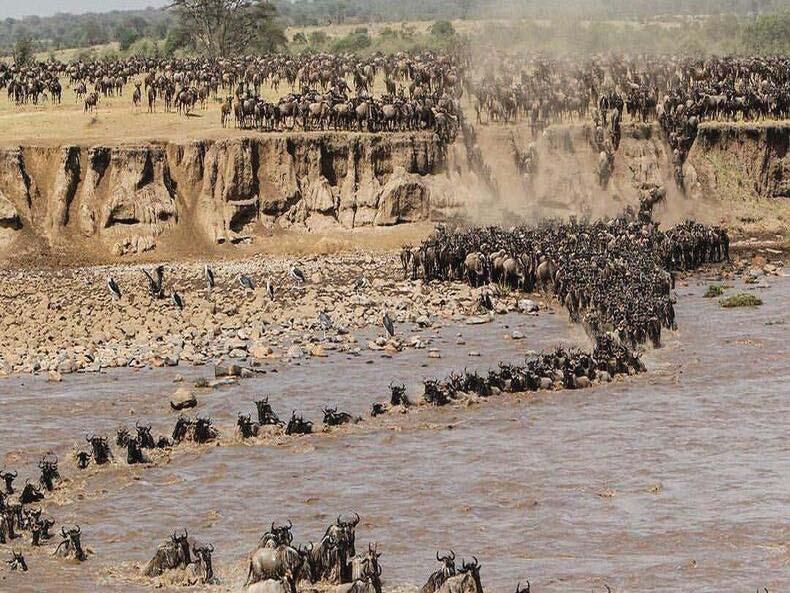
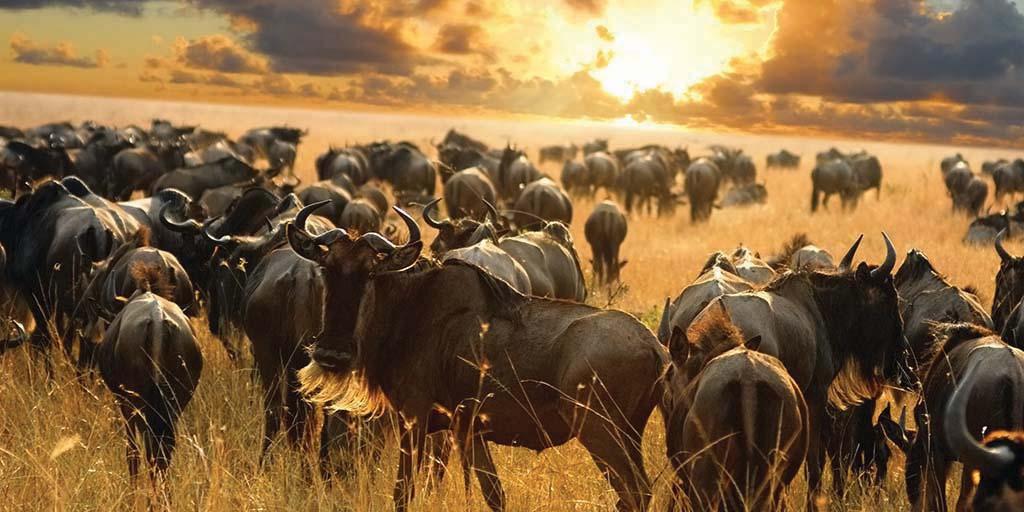
South Africa to Kenya. This meant we were able to make a general genetic comparison between migratory and non-migratory populations. Populations of migratory wildebeest showed greater genetic diversity. They had extensive random mating which reduced inbreeding levels compared to nearby populations whose migration patterns had been recently interrupted. This was found across multiple locations. The conclusion is clear.
There’s an overall negative genetic effect in wildebeest populations that have been prevented from migrating, regardless of where they live on the continent. Reduced genetic diversity makes animals less healthy and therefore more vulnerable to illness and infertility. Populations with low genetic diversity are less able to evolve, or cope with changes to the environment. So, if climatic changes continue to intensify and there isn’t as much genetic variation to enable them to adapt, their survival could be threatened. Already vulnerable Large, non-migrating wildebeest populations are already vulnerable and their numbers shrink when they cannot migrate.
This is because they don’t have enough food to eat, can-
not access nutrient-rich calving grounds or don’t have enough drinking water in dry periods.
They also cannot escape their predators, become vulnerable to poaching and are vulnerable to disease outbreaks, like rinderpest. While the total number of wildebeest across the continent remains fairly stable, many local migrating populations have experienced steep declines and several have even collapsed in recent decades.
We’ve seen this affect populations in parts of Kenya, Tanzania and Botswana.
For instance, the Mara-Loita migration collapsed by 76% from about 150,000 wildebeest in the 1970s to about 36,500 animals, all of which had become resident, by 2021.
And, in Botswana, fencing to protect cattle from coming into contact with migratory wild animals has seen the Kalahari wildebeest population decline by more than 94.2% from roughly 260,000 in the 1970s to fewer than 15,000 in the late 1980s.
These findings stress the critical need to preserve animal migration paths.
Putting things into perspective Policymakers need to pay special attention to preserv-
ing the wildebeest’s old and natural migratory routes. There are certain steps that can be taken:
• protect highly variable arid and semi-arid lands inhabited by wildebeest
• protect critical drought refuges, such as swamps and woodlands
• regulate and strategically plan the expansion of permanent settlements, including urban centres, infrastructure, fences and cultivation in pastoral lands
• designate zones for wildlife and livestock grazing and settlements
• make and enforce clear rules and regulations governing land use, land sales, leases and development on crucial wildlife migration routes
• reintroduce locally endangered wildlife species, such as wildebeest, from outside ecosystems wherever possible.
By addressing these priorities, efforts to save and restore threatened ungulate mass migrations can be more focused, coordinated and effective, and contribute to the long-term conservation of these animals. TheConversation.
Okavango District Council
chairman Gaopalelwe Ronald has revealed that farmers in his district have been hard hit
by the ongoing drought which has led to wild animals, especially elephants encroaching further into human settlements in search of food and water.
The southern African region is experiencing one of its worst droughts in decades, and millions are facing extreme food insecurity and water shortages, amidst a growing climate
The drought is yet more evidence of the impact of climate change, but it is exacerbated by El Niño, a weather pattern of unusually warm water on the surface of the Pacific Ocean that is leading to higher temperatures and lower rainfall across southern Africa. This episode, recorded as one of the five strongest in history, has also led to devastating floods in other parts of the continent.
In Southern Africa, about 20 million people are now facing crisis levels of acute hunger because of the El Niño-induced drought.
In a recent meeting between Reena Ghelani, UN Assistant Secretary General and Climate Crisis Coordinator for the El Niño/La Niña response; Menghestab Haile, World Food Programme RD; and Ibrahima Cheick Diong, UN Assistant Secretary General and African Risk Capacity (ARC) Group Director General, stakeholders discussed the response to the drought emergency to minimise the impact on lives and livelihoods of the most vulnerable.
Climate extremes such as droughts and floods are a significant threat to the region’s economy where more than 70 percent of the population sustain their livelihoods through farming activities. Stakeholders in Africa’s climate landscape recognise the southern African drought as a serious risk to lives and livelihoods.
Drought conditions are widespread across the southern African region and communities are facing extreme hunger, limited water supply and malnutrition, not to mention the loss of income from their agricultural activities’, he continued.
Before the start of the 2023/24 agricultural season, Malawi, Mozambique, Zambia and Zimbabwe, all countries severely affected by this crisis, made the critical decision to participate in ARC risk pools for drought. Based on early projections from ARC’s season monitoring tools, all four countries are likely to receive insurance payouts, and this will be confirmed at the end of the season. The risk pools, run by ARC Limited, the insurance affiliate of the ARC Group responsible for risk pooling and
transfer, avail timely funds to facilitate early response to a disaster event.
‘The drought is hitting at a time of significant protracted unmet needs, with alarming food insecurity and malnutrition levels, and funding shortages that have stalled humanitarian activities,’ says Menghesab Haile. ‘The drought has decimated livelihoods across southern Africa. The El Niño weather phenomenon serves as a poignant reminder of the climate crisis - and how urgent it is to scale up investment in activities that build resilience. Communities must be empowered with climate adaptation skills that will enable them to mitigate, reduce, and absorb the effects of climate shocks.’
As part of the ARC Replica programme, an initiative that allows humanitarian actors to take out insurance on behalf of a country, Replica partners for the four countries: World Food Programme, StartNetwork and UN Refugee Agency (UNHCR) are also likely to receive a payout. Not only does this programme complement other response activities from the countries, but it goes a long way towards increasing the resources to reach vulnerable populations.
In preparation for the end of the agricultural season, ARC, together with the in-country Technical Working Groups of the four countries, are in the process of finalising the Final Implementation Plans (FIP), a document that clearly outlines the use of an ARC payout ahead of the end of season. This is part of the ARC contingency planning process initiated before the start of a season. This crisis underscores the importance of instruments such as the ARC solution in building resilience and facilitating recovery efforts. It also emphasises the value of collaborations between partners to support Africa’s resilience building efforts.
ARC, as a specialised Agency of the African Union, works with AU member states to strengthen their preparedness to respond to such threats. The ARC mechanism combines four critical elements of disaster preparedness: early warning, contingency planning, risk pooling and risk transfer to create a powerful value proposition that has proven effective in strengthening a government’s ability to manage disaster events. ARC
Gaopalelwe indicated that they anticipate a spike in human wildlife conflict incidents in the district due to ongoing drought which has forced wild animals, especially elephants to move closer to human settlements searching for water and food.
He said that some farmers who had ploughed drought resistant crops such as water melons and cowpeas have left the ploughing fields empty handed due to elephants’ damage.
Consequently, molapo farmers, known for planting sorghum have also lost a battle of an infestation of quelea
birds which have raided their fields.
With high poverty level, Ronald lamented that the prolonged dry spell and frequent heat waves may negatively affect the district and increase the number of destitutes as well as human wildlife conflicts cases.
Ronald has since called for an extension of the farm inputs subsidy further proposing for an increase of the subsidy from 30% to 50% in order to alleviate the effects on farmers.
For this financial year, Ronald indicated that the district was allocated a total amount of P5
540 000 for wildlife damage compensation which is currently ongoing.
In his previous full council meeting Ronald indicated that for the previous quarter, they received 368 cases of human wildlife conflict and problem animals. He noted that though they have a back log of payments, they managed to compensate 860 individuals this year. He indicated that from the 2747 farmers who registered for Temo Letlotlo only 543 farmers managed to acquire seeds from Botswana Agricultural Board (BAMB) adding that no farmer has
managed to acquire fence and fertilizers thorough the programme.
The Department of Metrological services forecasted a severe drought for 2023/24 season due to Elnino’s influence in the Southern hemisphere. The anticipated dry spell and high temperatures posed challenges in the Agricultural sector.
Areas across the country registered temperatures exciding 40 degrees Celsius during peak periods. Other Southern African countries have not been spared from the Elnino as some recorded lower average of rainfall.
LOCATION: CAMP | REPORTING TO: LODGE GENERAL MANAGER

Responsible for supervision, co-ordination, and management of the Back of House teams to provide excellent guest and staff experience.
•Oversee the General repair and maintenance of lodge structures, equipment and machinery (vehicles, boats, water pumps, generators, ice machines, washing machines, tumble driers, STP, solar plants, lodge appliances, storerooms, fences, roads etc).
•Ensure all equipment, buildings, airstrip, and grounds are in a well-maintained and functioning order.
•Monitor and implement service and maintenance schedules.
•Ensure camps are operating as energy efficiently as possible and minimising waste.
•Ensure complete and timely reporting of data to Group Environmental Team.
•Ensure compliance with Environmental Management Plans.
•Provide high quality guest service experiences for all guests throughout their stay. Host guests to ensure excellent service and attention to detail.
•Responsible for safety of all staff and guests while in the lodge or on lodge related activities and at the airstrips.
•Maintain and monitor all fire breaks and fire equipment.

•Maintain radio equipment to ensure adequate communication between vehicles, boats, aircraft, other lodges, and Maun operations base.
•Effectively utilise skills required for work delivery, in line with policy. This entails planning for the required skills, procuring them, and ensuring their effective and prudent employment. It also entails managing the work environment in a way that promotes skills retention, worker motivation and productivity.
•Diploma in Hospitality and Tourism Management or equivalent. Minimum of three (3) years’ Experience within the hospitality industry in a management role.
•First Aid and Fire Training (Valid certificate) and Safety, health and Environment Training.
•Must have a good working knowledge of the Microsoft Productivity Tools inter alia Outlook, Word, Excel, PowerPoint, and Planner.
•Basic knowledge of mechanics, plumbing, carpentry, and electrics.
•Basic Knowledge of and interest in flora and fauna.
•Driver’s License & PRDP
•Rifle Handling Training
•A trade certificate or qualification is highly desirable.

•Leadership, decision making, and quality management.
•Excellent communication and interpersonal skills.
•Planning and organizing.
•Proactive nature.
•Service excellence.
•Proficiency in budgeting, forecasting, and cost control.
•Honesty and sober habits.
Applicants are requested to submit their CVs along with verifiable references to: Email to: awetse.vasco@desertdelta.com
Please note that only short-listed candidates will receive a response.
Application deadline: 03 May 2024




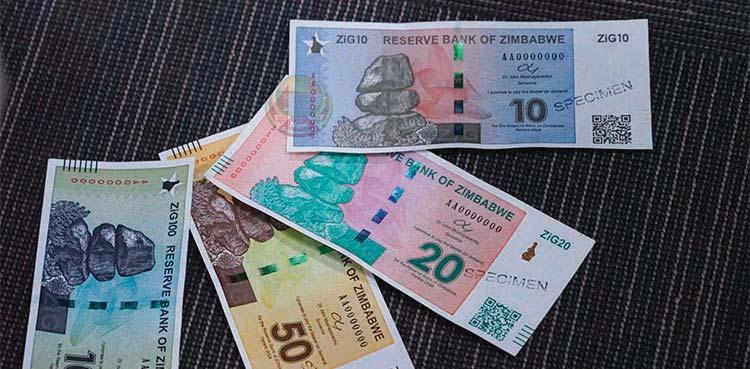
The Zimbabwean government earlier this month introduced a new currency, the ZiG, short for Zimbabwe Gold. The ZiG is backed by 2.5 tons of gold and about $100 million in foreign currency reserves held by the central bank, and a single ZiG is worth about 7 US cents, the price of a milligram of gold.
The move is an effort to stabilise the volatile exchange rate that has roiled the country’s retail sector and given an upper hand to informal traders like Tinotenda. For more than a decade, Zimbabwe has been struggling with a currency crisis sparked by the government’s decision to keep printing money. That has fuelled hyper-inflation, which in 2008 reached the official rate of 500 billion percent. To get things under control, the country adopted greenbacks for more than a decade, before switching back to Zimbabwean dollars in 2019.
The trouble is that, while businesses have been forced to use Zimbabwean dollars at an official exchange rate set by the central bank – which is widely seen as overvalued – traders have stuck with the more stable American dollar. This has meant that retailers have been obliged to sell items at prices that are often significantly more expensive in US dollar terms than those same items for sale on the street.
The policy has been a boon to informal traders, as 80% of all commerce is conducted in US dollars. It’s also been a serious liability for major retailers such as the Johannesburg Stock Exchange-listed Pick n Pay Stores Ltd. and rival OK Zimbabwe Ltd., which has operated in the country for 82 years. With inflation soaring — it hit 55% in March — and the local currency prone to wild swings, exchange-rate losses have eroded the value of earnings.
The exchange rate restrictions created a “huge disadvantage” for “compliant businesses who
grapple with taxes, licensing, labour costs and rentals,” said Denford Mutashu, president of the Confederation for Zimbabwe Retailers. The IMF has cautioned that they “promote informality, which erodes the tax base and undermines longer-term growth.”
Retailers have been even more blunt. OK Zimbabwe, which makes only 20% of its revenue in US dollars, said the policy puts businesses at risk of “forced death.”
The ZiG is an “effectively revalued” Zimbabwe dollar, said Tony Hawkins, a Harare-based economist and a former economics professor at the University of Zimbabwe. To support the new currency and spur growth curtailed by high borrowing costs, the central bank reset interest rates from 130%, a world record, to 20%. And so far, the ZiG is off to a promising start — after more than a week of trading, it has gained 1.5% against the US dollar. That’s a significant change from the Zimbabwean dollar it’s replacing. When the dollar was handed its death sentence on April 5, it was one of the world’s worst performing currencies, trailing behind only the Lebanese pound. It lost value every single trading day of this year.
Another factor that authorities hope will help the ZiG succeed is that businesses will no longer be forced to stick to a fixed exchange rate. Assuming the currency stays stable, said John Mushayavanhu, Governor of the Reserve Bank of Zimbabwe, retailers now run the risk of driving themselves “out of the market” if they raise prices too much.
While businesses rush to adapt to the ZiG, one of the biggest concerns is whether it will create a parallel currency market — which could threaten its exchange rate stability. If the ZiG’s value were to rise or fall in the informal sector, for instance, that could have an effect on the prices of goods and services, which could then
be reflected in the official exchange rate. According to the Harare-based brokerage firm IHS Securities Ltd., it’s just a matter of time before this takes place.
It’s likely that “some form of parallel market will emerge as a significant portion of the population remains unbanked,” it said in an April 8 note to clients. “It is yet to be seen what level the parallel rate will settle at.”
A street market price of 16 ZiG per dollar was being quoted Tuesday by ZimPriceCheck. Com, a website that tracks official and parallel exchange rates.
The majority of Zimbabwe’s 6.3 million working people are informally employed, according to the country’s national statistics agency. Wholesale and retail trading of goods such as soft drinks, perfumes and even diapers is common, and many traders work out of “tuck-shops” — tiny spaces in densely packed buildings. Those who want to avoid overhead costs might sell from the trunk of a car or by the side of the road.
The Reserve Bank of Zimbabwe estimates that the informal sector generates $14 billion in annual revenue. The World Bank has called Zimbabwe’s black economy — which operates on a strictly cash basis — the world’s second-largest after Bolivia. Impromptu markets and tuck-shops are so popular that some major retailers have linked them to a decline in foot traffic.
In downtown Bulawayo’s central business district, informal traders sit along a row of skyblue make-shift tents hawking bales of second-hand clothes and electronics. Known as “mabhero,” the bales come from neighboring countries such as Mozambique and Zambia, where traders buy goods in US dollars to bring back to Zimbabwe. Clothes are laid out in piles on the ground for pedestrians to stop and pick through.

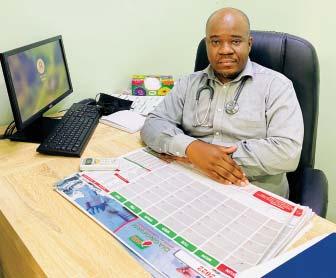
These mabhero sellers are eating into the margins of larger clothing competitors such as Edgars Stores Zimbabwe and Truworths Ltd Zimbabwe. Sales have declined due to “cheap and fake imports selling at below local and international manufacturing costs,” said Truworths in a March financial results release, adding that it “cannot viably compete.”
Such cross-border imports aren’t limited to clothes: On social media, some sellers even offer contraband Starlink terminals. These Space X-made kits, which aren’t yet legal in Zimbabwe, sell for between $1 000 and $1 250 US.
As retailers continue to lose ground to informal sellers, many are hoping the ZiG will offer relief. Because it isn’t pegged to a fixed exchange rate, Maxen Karombo, chief executive officer of OK Zimbabwe, said he’s optimistic about it. “This should bode well for all in retail,” Karombo wrote in response to questions, “as we now compete on the basis of value.”
Mike Kamungeremu, president of the Zimbabwe National Chamber of Commerce, said the plan is to “give ZiG a chance” and to review the new currency’s effectiveness and impact by June.
Still, as Imara Asset Management, the country’s biggest independent brokerage, observed in a recent quarterly note, breaking up with the US dollar will be a challenge. As the informal market has grown, some big manufacturers now prefer to operate in it.
Among the businesses that straddle both sectors are Zimbabwe’s two largest bread manufacturers, who supply tuck-shops and roadside traders with bread every morning. The wholesale price for a loaf of bread is 80 US cents, Tinotenda explained, and most informal traders price them at $1. “But walk into the supermarket, there they sell the same bread for $1.20,” he said. “No one buys it.” Bloomberg.
The nights are slowly getting longer, the mornings are becoming chillier and darker, which means winter is around the corner. We all know the pain of the ailments that winter brings with it, mainly upper respiratory tract infections in the form of influenza or flu as commonly known. It’s worth noting however that most people confuse a common cold for Influenza, and I shall explain what the differences are.
Influenza (flu) is a highly contagious viral infection of the respiratory tract that can cause severe illness and life-threatening complications (including pneumonia). It can affect people of all ages. It is a seasonal infection and common occurs during the winter months from April up until September.
The presentation of influenza can be varying; however, the most common presentation is an abrupt onset of fever associated with a dry cough. Other symptoms include severe body pains, feeing extremely weak, chills, sore throat, runny nose and aching behind the eyes. The diagnosis can be confirmed by doing a throat swab and picking up the specific viruses that cause influenza.
Patients with severe symptoms particularly the elderly and those with comorbidities may require hospital admission. This is usually for supportive treatment, supplemental oxygen if needed and antiviral therapy. The antivirals against influenza are usually very effective if given early in the course of the disease within 24 to 48 hours of onset of symptoms. The majority of the patients do recover within 3 days.
The common cold on the other hand is caused by different type of virus, such as rhinovirus and parainfluenza. It is much milder than influenza and its symptoms are often more gradual. Fever and chills are rare in patients who present with common cold. They commonly have sneezing, stuffy nose and sore throat. Adults don’t generally need medical attention for a common cold and the symptoms usually resolve on their own . one should seek medical attention if the symptoms persists, if there is high fever, if there is shortness of breath or noisy breathing.
The most effective way of preventing influenza is by getting a flu vaccine which has been shown to be very effective. This vaccine should be taken yearly just before the winter season begins. The vaccine is recommended for all persons older than six months. It is highly recommended in those at risk for severe complications of flu, which are children less than 2 years and adults about 50 years of age.
The flu vaccine has been shown to be very safe and has been administered to millions of people with no major side effects. They may be minor side effects which include sore or redness at injection site, headache , fever and ,muscle aches. This side effects are usually not long lasting.
Dr Bernard Morapedi Specialist Physician MBChB (UP), Dip HIV MAN (SA), MMED (Internal Medicine), FCP (SA).
Based at Doctors INN health center and Maun Private Hospital.
drbernard.morapedi@ gmail.com
75170521
I Akanyang Batlhophi, i wish to transfer plot 37006 situated at Disaneng, Maun to Langton Nhiwatiwa, P O Box 919, Gaborone residential plot no 37006, is hereby transfered

This notice is issued in compliance to the provisions of the Tribal Land Act of 2018, Section 34, subsection (1) (a) to (e) and the transactions involves the property in Tribal Land in respect of the undermentioned property namely;
CERTAIN;Piece of Land being TRIBAL LOT ;37668
SITUATE;At Maun Village in the Batawana Tribal Territory;
MEASURING; 4393m2(Four Thousand Three Hundred and Ninety-Three Square Metres) .
HELD UNDER: Memorandum of Agreement of Lease Between Tawana Land Board and Mark John Kyriacou. CONSIDERATION; P 600 000.00( Six Hundred Thousand Pula);
BE PLEASED TO TAKE FURTHER NOTICE that:
(a) Any Botswana citizen interested in interested into a similar transaction in respect of the above property shall be given priority notwithstanding the agreement reached by the above-named parties regarding the controlled transaction;
(b) Should any person wish to object to the proposed controlled transaction, notice of the objection with reasons thereof should be addressed to the Tawana Land Board, with copies to the undersigned (LLP Attorneys) within 30 days from the date of publication hereof
DATED AT MAUN THIS 19TH DAY OF APRIL
from owner to Zimbabwean citizen of passport number AE151622. Plot will continue to be used as a residential plot (1165)
Farm worker needed urgently at Xhana cattlepost, 55 Km from Maun. He should have 5 years hands-on experience with knowledge of small stock. Contact Tshiamo Diteko, 71615752/72564245.
Closing date 31 May 2024 (1165)
Neighbors of a plot belonging to Alemos (Pty) Limited located in Mabudutsa, legally referred to as tribal lot 36339, Maun wishes to change the use of the plot from residential (SFR) to commercial (Retail and Offices).
Neighbors of a plot belonging to Antony Sianga located in Mohembo West, wishes to change the use of the plot from light industrial to commercial (Retail and Offices).
Neighbors of a plot belonging to Antony Sianga located in Mohembo West, wishes to change the use of the plot from commercial guesthouse to commercial (Retail and Offices).
Neighbors of a plot belonging to Antony Sianga located in Mohembo West, wishes to change the use of the plot from ploughing field to commercial (Selected Service Hotel).
Neighbors of a plot belonging to Gadiefele Moeti located in Gumare wishes to change the use of the plot from single family residential (SFR) to Civic and Community (Pre School).
Neighbors of a plot belonging to Obed Sibanda located in Gumare, wishes to change the use of the plot from residential (SFR) to commercial (Retail and Offices).
Neighbors of a plot belonging to Obed Sibanda located in Shakawe, wishes to change the use of the plot from residential (SFR) to commercial (Retail and Offices).
Owners of the afore said neighbouring plots are thus consulted for approval or non approval of this notice. Neighbours may contact North West District Council or Okavango District Council, Physical Planning Office at telephone no: 6861844 /6874040if they dissaprove of this change of use within 21 days
Gaethaloswe Mokotedi of lot 184 in Makakung wish to change of land use from residential to commercial use, queries can be forwarded to North West District Council within 14 days from the date of publication. Please contact Physical Planning Office on 686 0241/2 or cellphone number 72862273/72982505 for further clarification (1165)
EMPLOYMENT
Game Studios (Botswana) Pty Ltd T/A Okavango Ceramics is looking for an experienced master potter. Applicants must have no less than 20 years ceramic experience with experience in ‘‘In house training.’’Applicant must have a full working knowledge of kiln operation. Applicant must have a full knowledge of glaze and glazing, applicant must be able to throw forms of any shape or size. Applicants can send their CV’s and any other relevant information to okavangoceramics@gmail.com. Salary is negotiable (1165/1166/1167)
Looking for a farm supervisor/worker. Must be in pocession of agricultural diploma (Commercial farming) of a minimum 3 years work experience in planting vegetables and fruit trees. Please send CV to deoncuyler@gmail. com. Apply at Waterweed Investments, P O Box 21870 Boseja, Maun (1165/1166)
Wanted four (4) farm workers at Samedupi area. Apply to P O Box 22090 Boseja, Maun. Contact David Khumoetsile on 74440903/71320856
Maun. Closing date 15th May 2024 (1165/1166)
House for rent at Matshwane, 2 bedrooms, kitchen, sitting room, bathroom and toilet, electricity and water next to Kubung Primary School.
Price: P2500.00 per month. Contact 72715151/75862810 (1165)
NOTICE OF INTENTION OF ENTER INTO A TRANSACTION WITH A NON- CITIZEN IN TERMS OF SECTION
CERTAIN:piece of land being Lot 27934 Maun;
SITUATE:At Maun in Batawana Tribal Territory;
NOTICE IS HEREBY GIVEN in terms of the Tribal Land Act, that Archein (Proprietary) Limited intends to transfer property to Mehta Holdings (Proprietary) Limited.
MEASURING: 7313 m2 (Seven Three One Three Square Metres);
HELD UNDER: Marandum of Agreement of Grant of Lease between Tawana Land Board and Archein Pty Ltd dated 18/05/2017
SUBJECT TO:Property is valued at P1,440,000.00.
CONDITION OF TRANSFER:Beneficial shareholding of both companies, transferor and transferee, are identical and there is no change in beneficial ownership of the property.
Any citizen objecting to this transaction should do so in writing, giving reasons thereof to Maun Landboard, P/Bag 201, Maun, within 30 days of this publication of this notice.
NOTICE OF INTENTION OF ENTER INTO A TRANSACTION WITH A NON- CITIZEN IN TERMS OF SECTION 34 OF TRIBAL ACT, 2018
NOTICE IS HEREBY GIVEN in terms of the Tribal Land Act, that Extra Light Group (Proprietary) Limited intends to transfer property to Mehta Holdings (Proprietary) Limited.
CERTAIN:piece of land being Lot 1988 Maun;
SITUATE:At Maun (Cadastre 274) in Batawana Tribal Territory;
MEASURING:5083 m2 (Five Thousand and Eighty Three Square Metres);
WHICH PROPERTY:Is held under Memorandum of Agreement of Lease No. FT TL 6/2023 dated 16th January 2023 made in favour of EXTRA LIGHT GROUP (PROPRIETARY) LIMITED
SUBJECT TO:Property is valued at P1,000,000.00.
CONDITION OF TRANSFER: Beneficial shareholding of both companies, transferor and transferee, are identical and there is no change in beneficial ownership of the property.
Any citizen objecting to this transaction should do so in writing, giving reasons thereof to Maun Landboard, P/Bag 201, Maun, within 30 days of this publication of this notice. NOTICE OF INTENTION TO ENTER INTO A CONTROLLED
of Transfer
953/2010 dated the 1st day of December 2010, made in Favour of JACOB MASIMA in respect of the below- mentioned property, namely ;
CERTAIN; piece of land being Lot 716, Kasane
SITUATE; in the Chobe Administrative District;
MEASURING
Sankoyo Bush Bucks goes into tomorrow’s match against BR Highlander in a crucial Debswana First Division North encounter at the Maun Sports Complex eyeing victory to advance its chances for the top spot in the league table.
Head coach, Likha Paphani exudes confidence ahead of this crucial match, “We always prepare to win. Our boys have a winning mentality, and even on days when we do not play our best, we find a way to secure the three points.”
Paphani has said the team capitalised on their break from weekend fixtures to fine-tune its strategies, adding that they are in excellent shape, with the sense of purpose and determination having been instilled within the squad.
Despite a grueling week of training, the team has man-
aged to avoid injuries so far and according to the Paphani, they remain cautiously optimistic, indicating that the team’s medical staff is closely monitoring the players to ensure their fitness for battle.
Paphani, acknowledged BR Highlanders as a formidable opponent, that has quality. “But they are visiting us at the wrong time because it is now or never for us,” he warned.
Meanwhile, as the FDNL reaches its climax, the race for promotion to the elite Botswana Football League (BFL) next season has become a fierce battle. Sankoyo Bush Bucks and Motlakase Power Dynamos, find themselves locked in a rivalry, each vying for the coveted spot in the top tier.
Sankoyo currently occupies the 2nd position with 29 points while the log leaders, Motlakase are on 31 points. The stakes are high for Sankoyo as they gear up for a pivotal 15 points that could
secure them the second promotion to the elite league next season should they win all their remaining five fixtures.

While the spotlight shines on the promotion contenders, teams like Pilikwe United and Makungulupeswa find themselves in the relegation zone, desperately fighting to survive. Just a point sepa-
Sankoyo will have to win their remaining five fixtures against BR Highlanders (Home), Chadibe (Away), Pilikwe United (Away), Tsabotlhe (Home) and away to Santa Green on the last day of the 2024/25 season. Likha Paphani’s charges secured 13 points against these opponents in the first round, winning against Pilikwe, Peacemakers, and Santa Green while drawing with BR Highlanders, and suffering defeats to Chadibe and Tsabotlhe. Meanwhile Motlakase has consistently impressed throughout the season. Their tactical prowess and performance have made them a team to watch, and with a two-point lead over Sankoyo, they are determined to secure promotion to the BFL. Motlakase continues to set the pace, as it cannot afford to slip.
rating them from safety, and their last five games will determine their fate.
Tomorrow, Pilikwe United takes on Chadibe FC at Oris Radipotsane grounds. Tsabotlhe FC welcomes Peacemakers at Newtown Primary School, while at Palapye
City Kings’ coach Casper Elijah has said his team’s loss to police X1 in the Orange FA Cup over the weekend, which marked the end of their campaign in the tournament, has not deterred them from their pursuit for promotion to the First Division North. With only five matches remaining in the current league (Gumare Stream), he said the team is determined to approach each
game with a well-thoughtout strategy and focus.
City Kings currently occupy the second spot in the league with 29 p log, behind log leaders, Green Stars SC of Etsha village separated by 3 points. According to the coach, the City players are in high spirits, ready to take on the challenges ahead.
The upcoming encounter against relegation-bound Acidic FC tomorrow at the Kings Park Arena is crucial, and Coach Elijah
is confident that his boys will secure victory. He expressed confidence in his charges, who he believes will qualify for the regional play-offs and eventually earn promotion to the First Division league.
“We have five matches left, therefore if we win all of them we will end the season with 44 points. We have to push harder than before,” he said.
He further indicated that the FA Cup has been a distraction as it affected their
performance in the league. “We will play in the Orange FA Cup next season because my team is in good form to win the stream championship’’. Tomorrow, City Kings takes on the relegated bound, Acidic FC at the Kings Park Arena, while, the log leaders will welcome the third placed, Red Stars at Green Stars Ground in Etsha. In other fixtures tomorrow, FC Mbunda welcomes Westside Spurs at Mbunda Grounds. On
Sunday, High Flyers FC is home to Young Stars, Morning Stars FC travels to Gumare to meet Standby FC while Golden Boys FC welcomes Silent Killers at Etsha 9 Grounds. All games start at 1600hrs. Meanwhile, City Kings’ financier, Calvis Kopo, has unveiled ambitious plans to boost football tourism in the Okavango region. The team’s recent performances against Mochudi Centre Chiefs and Police XI demonstrated their ability
to compete at the highest level, Kopo emphasised, indicating that the need for investment in football infrastructure, including player welfare, transportation, and coach incentives is vital.
“We are not just a team, but a community. All stakeholders and businesses in the Okavango area should come together to support our talented players and promote football development,” he stressed.
ciation (BOBA) has sent nine boxers to the inaugural Mandela African Boxing
From Page 12
a platform for all African nations playing cricket especially women to be more competitive. He said the tournament is a frontrunner for women’s T20 cricket in Africa.
He noted that the tournament will be an International Cricket Council (ICC) sanctioned event, whereby all matches played will
be considered for the ICC Women’s T20i rankings. Damodar said that the BCA is also ready to host the event and is hopeful that it will be a success as the association has experience and expertise in hosting international events. He stated that the association aims to grow the tournament to attract other countries across the world.
Cup which started on Monday in Durban, South Africa.
The ladies team consists of Phekie Bele-54kg, Keobakeng Philip-57kg, Kutlwano Sekhutlo-63kg and Kemogetse Kenosi-69kg while the men’s team was made up of Kobamelo Molatlhegi-48kg, Mmoloki Sekwaipe-57kg, Kabo Seitshiro-63.5kg, Rajab Mahomed-51kg and George Molwantwa-54kg.
The team is under the tutelages of Thebe Setlalekgosi, Gibson Rauwe and Pearl Mooketsi.
The competition aims to recognise the role of South Africa’s first democratic
President Nelson Mandela in his fight for liberation and to inspire young boxers to reach new heights. About 360 boxers from 41 African countries are participating in the competition and it features 12 Elite IBA Women’s Categories and 13 Elite IBA Men’s categories. It is organised by the International Boxing Association (IBA, African Boxing Confederation (AFBC) and the South African Boxing Organization (SANABO) at a prize fund of $500,000. The competition’ semi-finals will be held on the 20th April while the finals take place on the 21st April 2024.
In an interview, BOBA Secretary General Taolo Tlouetsile said that they use this continental competition as part of their preparations for the next Olympic Qualifiers which will be held in Bangkok, Thailand from 23rd May to the 3rd June this year. He stated that the participating boxers were selected based on their performance at the local and international levels.
“With limited funds we will never be satisfied with the level of preparations for the competition, but it is part of the game and there are no excuses, we have a team of
capable boxers,” he said.
IBA Secretary General and CEO, Chris Roberts has said, “Let us take Mandela’s dedication to boxing a strong inspiration for young generations and glorify his name through the Mandela Cup to make it a yearly tradition.”
It is reported that when incarcerated as a political prisoner during apartheid South Africa, Mandela practiced boxing as a means of self-discipline and to support his mental health, calling the sport “egalitarian”, due to its ability to transcend race, religion and wealth.



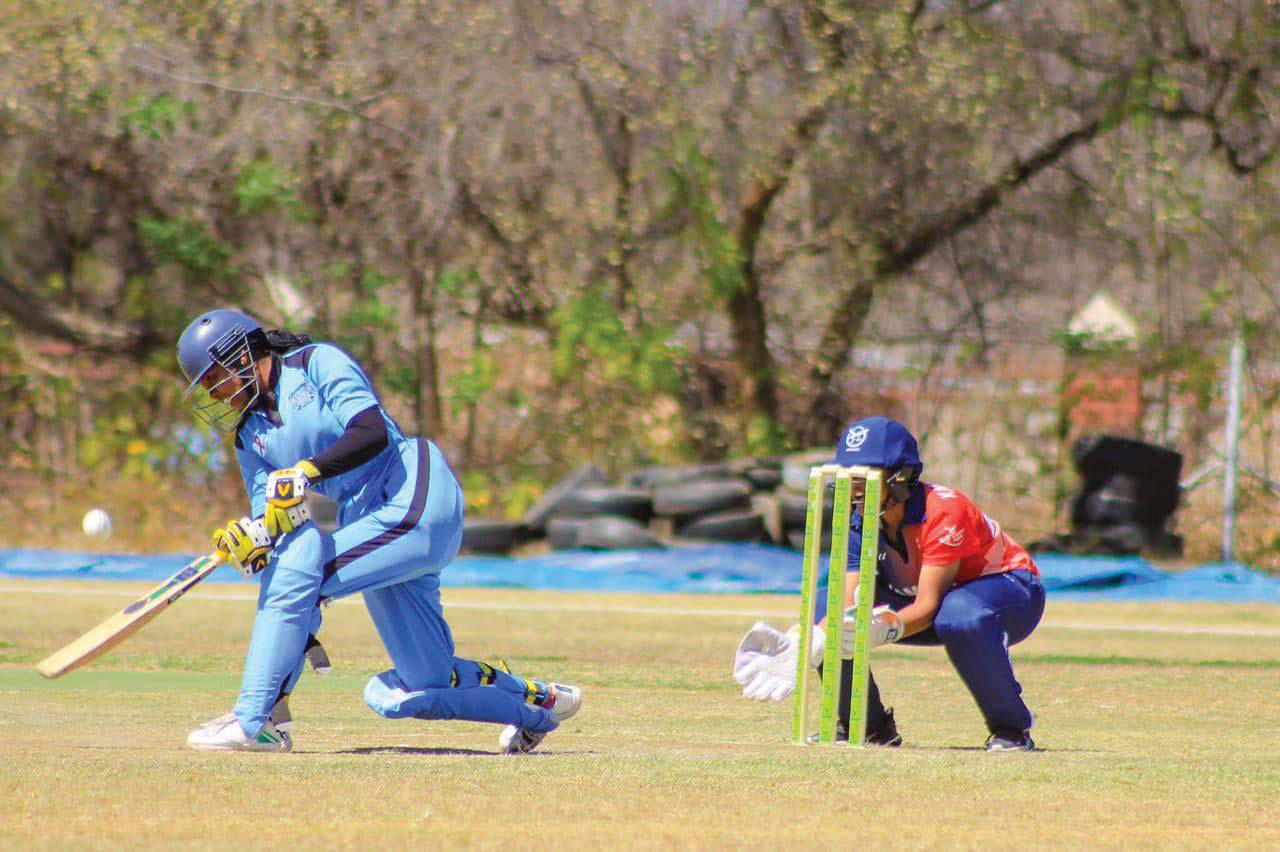 By Kgosietsile Bontsi
By Kgosietsile Bontsi
The Botswana Women Cricket team (Herons) is set to participate in the Kalahari Women’s T20 International Tournament to be held in Gaborone at the BCA Oval from the 22nd April 2024 until the 26th April.
The four nations extravaganza organised by Botswana Cricket Association (BCA) brings together Rwanda, Mozambique, Lesotho and Botswana and will be played in a double round robin format, whereby all teams will have the opportunity to play each other twice.
The format will provide for more matches, and a platform for teams to challenge themselves during the tournament to perform better, as they play.
In an interview, Botswana Ladies Team Coach Stanley Timoni said the team is ready to deliver its best, add-


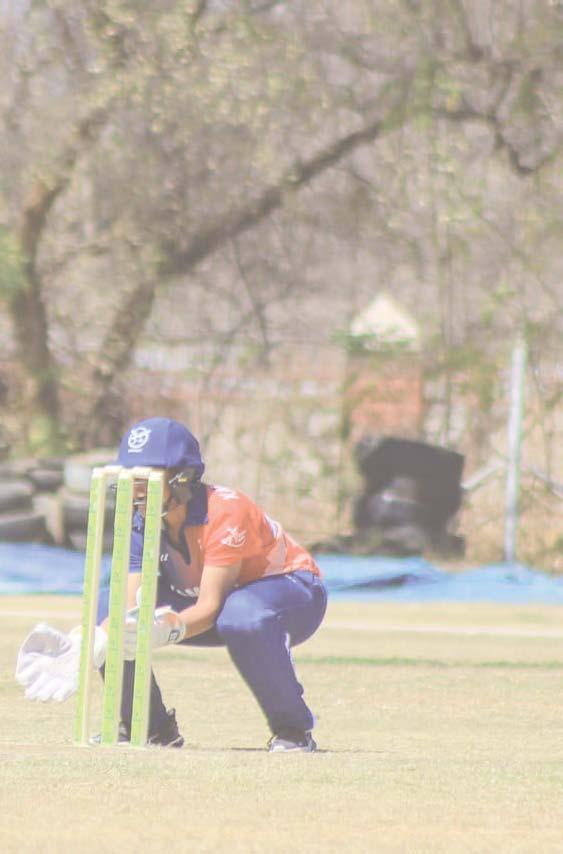
ing it had four weeks preparing for the tournament from last month where they had coaches from India’s Karnataka State Cricket Association (KSCA) to do skills transfer with their team.
According to Timoni, as part of preparations they have been conducting practice net
sessions, fielding sessions and this week they hosted matches.
“Our team is made up of 14 players that include four reserves and five under- 19 players whom we want to give an opportunity to showcase their talent during the tournament, and also mak-
ing them ready for the ICC World Cup Qualifiers which will be held in August in Malawi,” he said.
For his part, BCA Vice Chairman Sumod Damodar said through the tournament they intend to provide
Continue to page 11
